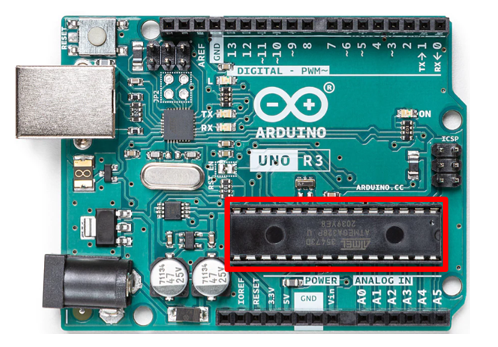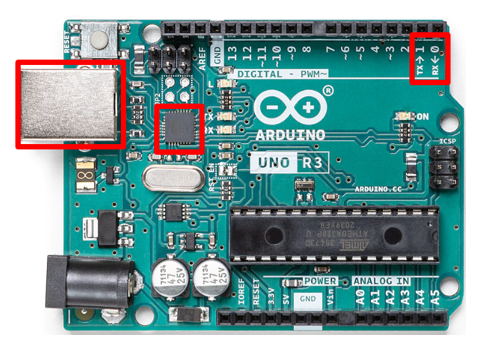Arduino is an electronic prototyping board based upon a microcontroller chip. Arduino is famous among teachers, students, enthusiasts, and engineers. Arduino not only helps to improve programming technique but also gives a chance to interact with real time hardware and microcontroller world. All this is possible because of the microcontroller and the circuit attached to it. Let’s discuss what are the three crucial parts of an Arduino board.
Three Important Parts of Arduino
There are multiple components involved in making an Arduino board. If a single component doesn’t operate then it’s hard for Arduino to work like a normal board. Each Arduino peripheral has its own function and somewhere it depends upon the other as well. Arduinos have very few independent parts. Below mentioned are the top three vital components of an Arduino board:
1. Microcontroller
Main purpose because Arduino boards are designed is to make users’ interaction with microcontrollers easier and more reliable. Microcontrollers allow users to program Arduino and execute instructions according to written code.
Microcontroller is the “Brain” behind all Arduino boards; it connects Arduino peripherals together, without a microcontroller Arduino board is nothing. Arduino uses an Atmel microcontroller in their boards. Microcontroller stores the written code in its flash memory. It has RAM to run instructions and an EEPROM memory to store data in Arduino even when it goes out of power. Microcontroller comes with pre-programmed bootloader that can program Arduino with attaching any type of external hardware.
2. USB Interface and Port
Another main component of the Arduino board is the USB B port and ATMEGA16U2 controller that allows serial communication with any serial device or PC. Without a USB port it’s hard to connect an Arduino board with a PC which can make the Arduino programming experience terrible.
USB is not limited for communication as it is also a stable power source for Arduino. The USB port can give Arduino a regulated and smooth 5V of input power. Using the USB port Atmega16U2 can convert and transmit any data serially without any need of external peripherals. For serial communication two serial digital pins are also available named Tx and Rx.
3. Voltage Regulator
Last main component on the top three list is voltage regulators. They are kind of a lifeline for Arduino boards. Once the power is input to Arduino board that straight goes to voltage regulators from their first voltage is regulated then fed to the Arduino peripherals.
Arduino boards have mainly two types of voltage regulators.
-
- Arduino 5V regulator
- Arduino 3.3V regulator
Remember the Arduino USB port is not connected to 5V voltage regulators it only connects with 3.3V regulator. If the 5V voltage regulator goes out of function, then the Arduino board will completely shut down unless powered using a USB port.
Conclusion
Arduino board is a combination of multiple components and parts, each part of Arduino serves its own function, some work on their own while some are dependent on others working. Among all microcontrollers, USB interface and voltage regulators are the three most crucial components of an Arduino board.



